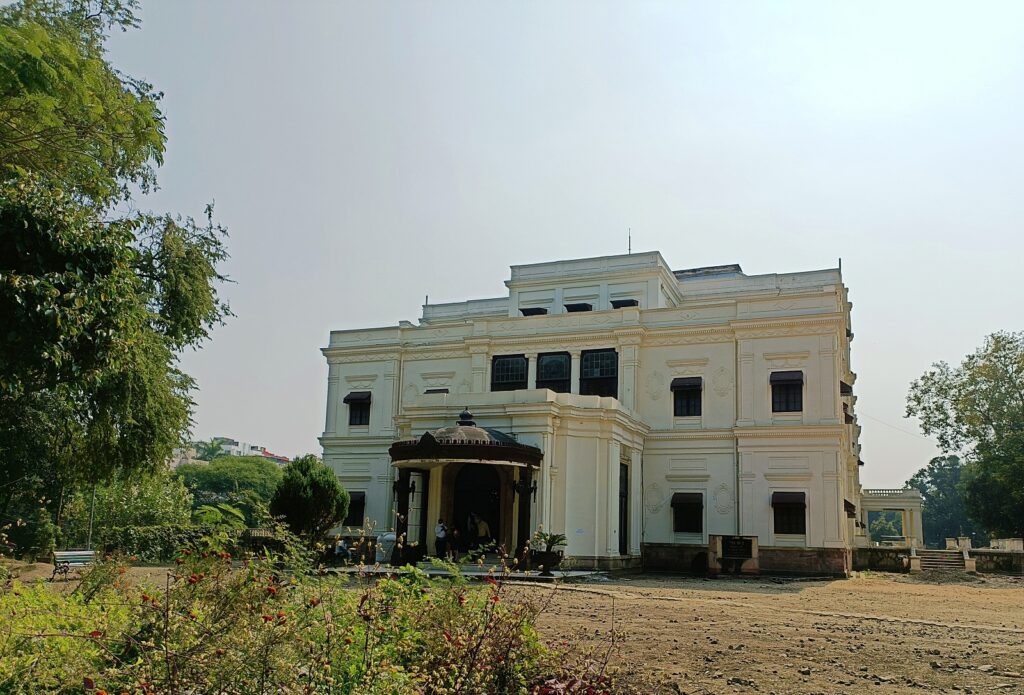Lal Bagh Palace: Holkar Maharajah’s Favourite Residence
In Indira Nagar, about 2 kilometres from Kanch Mandir, is an iconic mansion that evokes the fabled recollections of 19th-century India. Tukojirao II wrote the riveting story of this 78-acre property in the mid-eighteenth century, and his grandson saw the palace completed in 1926. My rendezvous with Lal Bagh Palace began at the entryway to what was formerly the Holkar Maharajah’s favourite palace. The colossal entrance gates of Lal Bagh evoke the elements of harmony and solidity associated with British Georgian architecture.

These doors, which were imported from England, have a rare resemblance to the gates of Buckingham Palace. The gates are emblazoned with the Holkar coat of arms and an emblem that reads, “He who tries will succeed.” This Lal Bagh or Red Garden Palace is a three-storey structure with 45 rooms, originally made of Italian marble, French crushed marble, and sandalwood, including a 20-acre rose garden with unique fountains.

Although what was once Central India’s most magnificent garden palace is now a crumbling ruin filled with dry leaves. This centuries-old structure features an Italianate roof and European architectural motifs on the inside. The fading history was once decorated with gold French Versailles motifs that have worn away over time.
The Renaissance Revival style is reflected in the unique wall and ceiling murals, euphuistic chairs, towering chandeliers, and palace carpets, making Lal Bagh one of India’s daintiest neo-classical buildings. Tukojirao Holkar III would have let his perfume do the talking in the 18th century, but only the smell of the wooden chest that formerly held the diverse perfumes lingers 168 years later.

The upper floor houses a collection of stuffed tigers and framed Malwa scenery taken by the monarchs. It’s distressing to discover that Lal Bagh is no longer cared for, despite its incredible heritage!

The rose garden has become an outer bed of dry leaves, with a thick layer of dust on the furnishings. Regardless of its dereliction, Lal Bagh Palace foretells the fascinating sagas of Holkar State, and historical tales continue to breathe beneath the folios of time.




